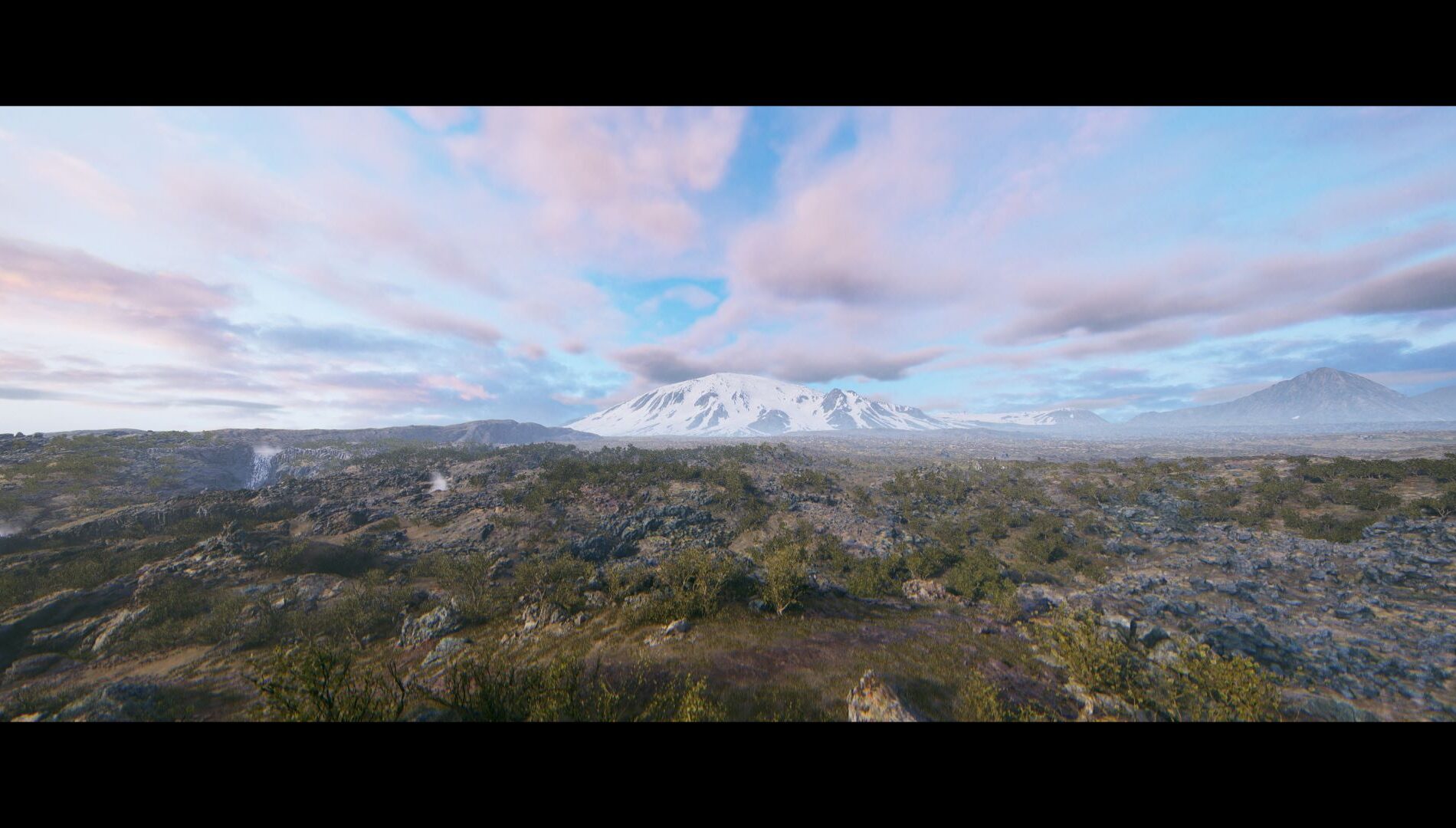
The Wanderers – The Team Behind Senua’s Saga: Hellblade II’s Incredible Landscapes
2017’s Hellblade: Senua’s Sacrifice was an exceedingly special game. A bold, brash direction for Ninja Theory, the decision to craft a short, narrative experience revolving around mental health was a brave leap, but one that ultimately paid off. Now, seven years later, the studio is gearing up to reveal a sequel to Senua’s story, built with the same love and care, but expanding on the debut in every conceivable way.
In the run up to launch, we’ll be bringing you the story of Senua’s Saga: Hellblade II from inside the studio itself, as well as stories and lessons from Hellblade’s creative leads. This is Ninja Theory’s ultimate form, filled with industry-leading talent, groundbreaking technology, and one of the most unique approaches to game development you’ve ever seen to fulfil the ultimate goal – the pursuit of true immersion.
When it comes to the environments showcased in Senua’s Saga: Hellblade II, breathtaking doesn’t quite cover it. Despite its linear story, the game showcases a sense of scale that adventures like this don’t often offer, and everything you see is rooted in a familiar realism. Where most games of this kind would confine you to corridors, valleys, and other means of obscuring your view, Hellblade II’s vistas often stretch to the horizon, giving you a sense of the sheer size of Senua’s journey ahead. The idea is clear – this is literal worldbuilding, rooting your journey in a much, much, bigger story.
During our visit to Ninja Theory, we had the opportunity to speak to key creative leads about how the studio achieved this sense of place through location scouting and research, to bring an ethereal, yet believable recreation of medieval Iceland into Hellblade II.
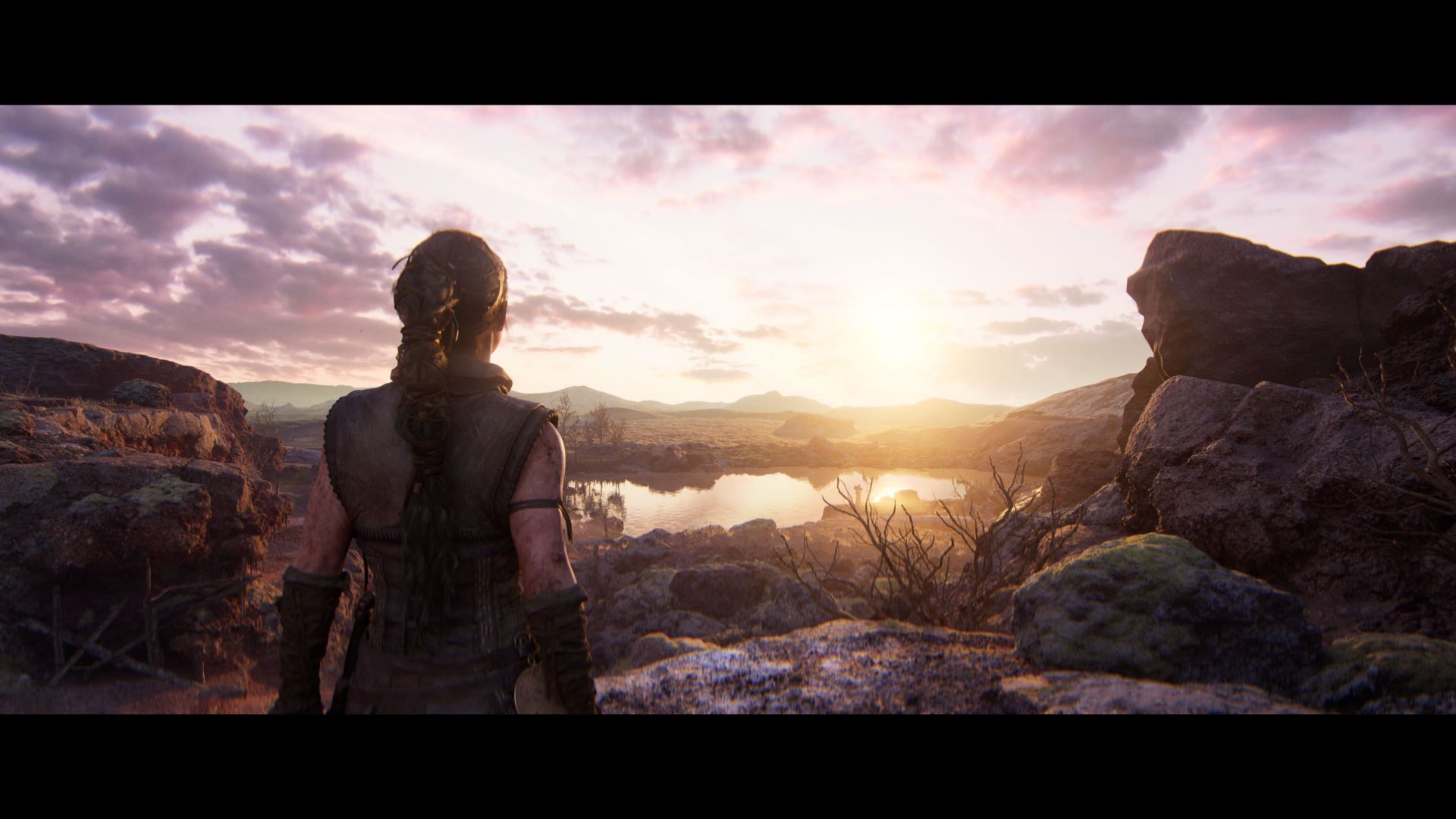
Choosing Iceland
While the first game culminates in Helheim, Hellblade II takes us to Midgard, known in Norse Mythology as the realm of men. The team moved through a process of elimination between several locations before settling on Iceland, which brings unique and encapsulating landscapes – somehow familiar and otherworldly all at once.
One chapter in Hellblade II takes us on a scenic route across the brisk and beautiful beaches of Reykjanestá, situated on the southwest coast of Iceland. This area is characterized by sprawling cliffs and rocky beaches, as well as an abundance of submarine volcanoes. It is, to all intents and purposes, a desolate wasteland, but an utterly phenomenal scene to witness as Senua. Another captures a fictionalized settlement located in Freyslaug, surrounded by rolling verdant hills and inspired by the real, picturesque hot-spring laden scenes of Fosslaug in Northern Iceland.
“The geography in Iceland is better than what we could have imagined,” says Dom Matthews, Ninja Theory Studio Head. “It’s grounded in nature, but it almost feels alien. But because it’s real, as humans it feels right to us – like a real place, even if you’ve never been there.”
“The geography in Iceland is better than what we could have imagined, it’s grounded in nature, but it almost feels alien.”
Dom Matthews
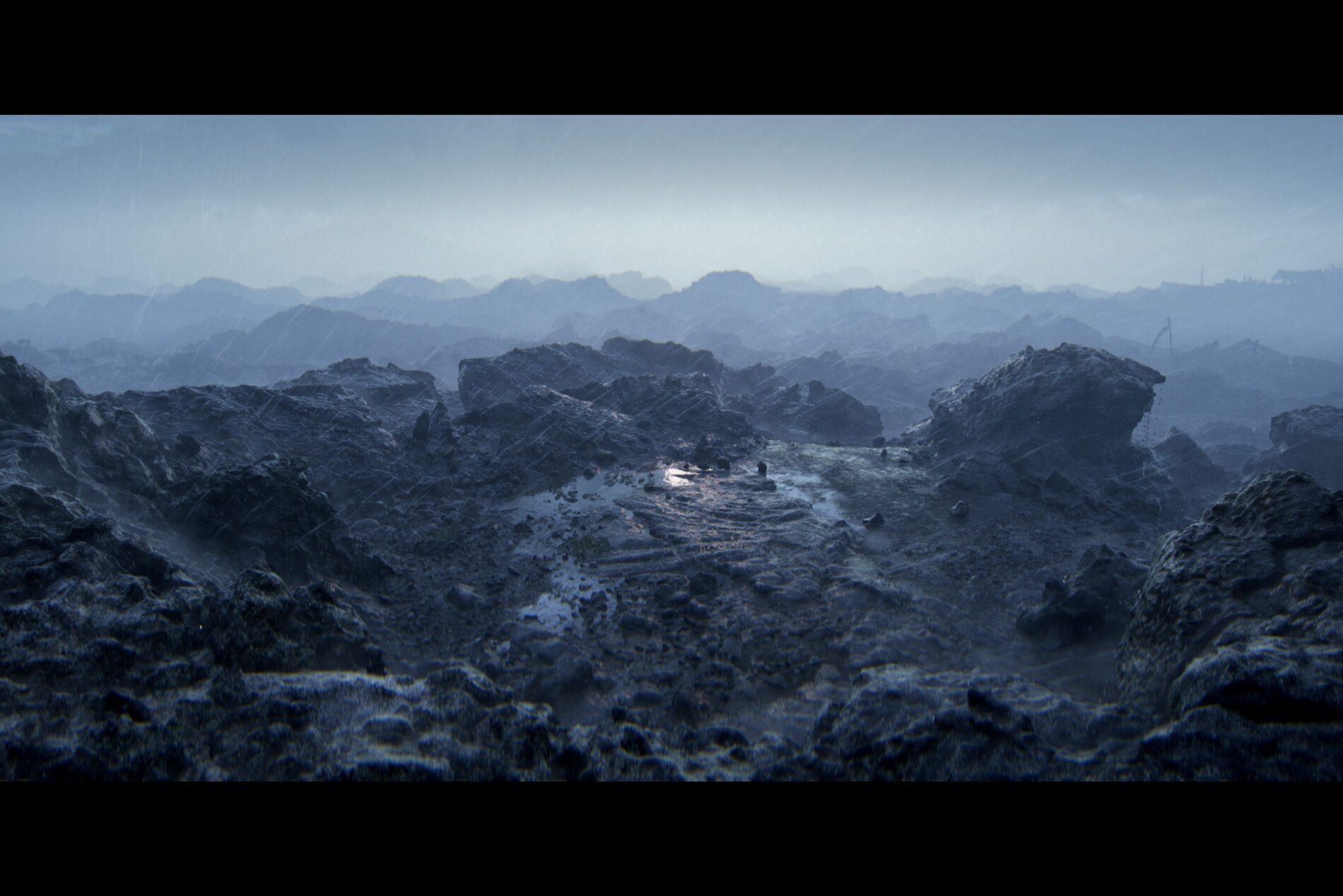
The team crafting Hellblade II‘s environments share an ethos – to stay grounded in this element of naturalness by scanning existing, physical objects into the game. According to Dan Attwell, Environmental Art Director on Hellblade 2, there are over 370 pieces of photogrammetry in the sequel, compared to just one in the first Hellblade.
As I travel around the studio itself, I see chunks of real Icelandic rock scattered around, still being used as reference. It’s a hefty amount of work to get out there and collect the materials, but it’s worth it in the end, as it means less resources are spent on hand-crafting assets to feel realistic – and, as Attwell comments: “You get a level of realism that you can’t get by doing it by hand.”
Mark Slater-Turnstill, VFX Director on Hellblade II, also speaks to another dimension of worldbuilding. He adds that nature is chaotic and unpredictable by design, and that is often hard to replicate organically. Sometimes a rock or a tree might come out a little too perfect if a human is being asked to conjure it up:
“As humans, when you think about an object, you’ve got a vision in your mind that might actually be quite different to the reality,” he adds.
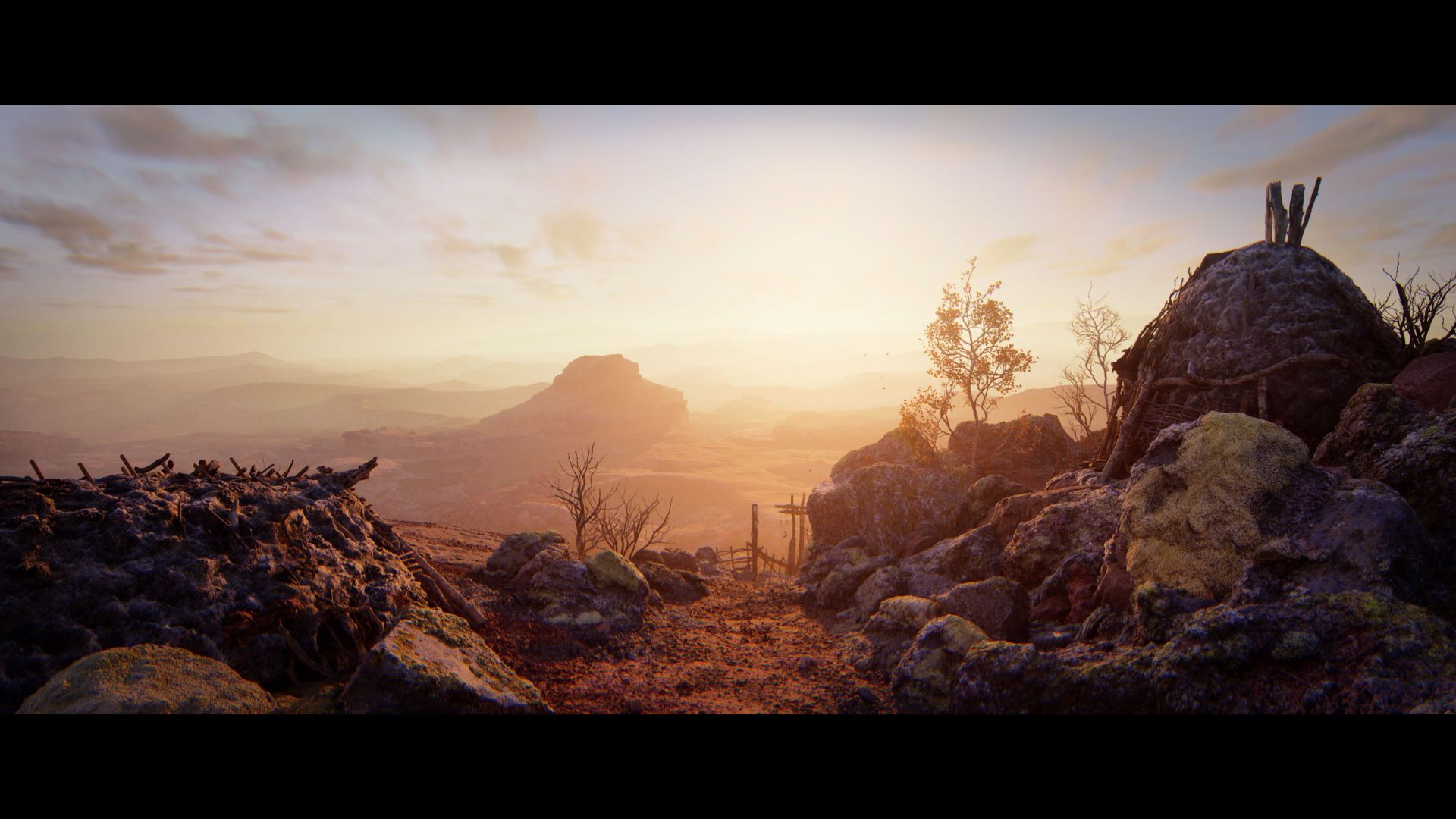
Not Quite As It Appears
Speaking of bending reality, Senua’s experience with psychosis means that the spaces around you are not always as they appear to be. The environmental and visual effects are, for the most part, grounded in reality, but Ninja Theory has the ability to veer into the magical with what Senua will experience as a result of her condition. The visions she experiences will manipulate her surroundings, tying into other gameplay mechanics in a consistently clever way.
“There’s a distinction between realism and believability – you can have fantastical elements that are also entirely believable,” Matthews says. “You’re in Senua’s shoes, trying to understand the world through her eyes, but the really powerful thing is that this isn’t beyond the realms of possibility for people that have experienced psychosis.”
It’s a delicate balance to strike though; Senua’s perspective must be authentic and real to her, but disarming to the player. Slater-Turnstill demonstrates this to me in action at his workstation, leading Senua towards an unassuming rock, which then morphs effortlessly into a stony, human head, before seamlessly opening a new path that was never there before. He must have seen this particular transition dozens of times, but he still smiles at the extremely impressive reveal as it happens.
“We’ve considered what we can use from the existing environment to create an authentic experience of lived psychosis. A lot of it is taking recognizable objects and displaying them in an unnatural way,” Slater-Turnstill explains. “It could be seen as ‘unrealistic’, but it’s not, because in her world, that’s what she’s seeing.”
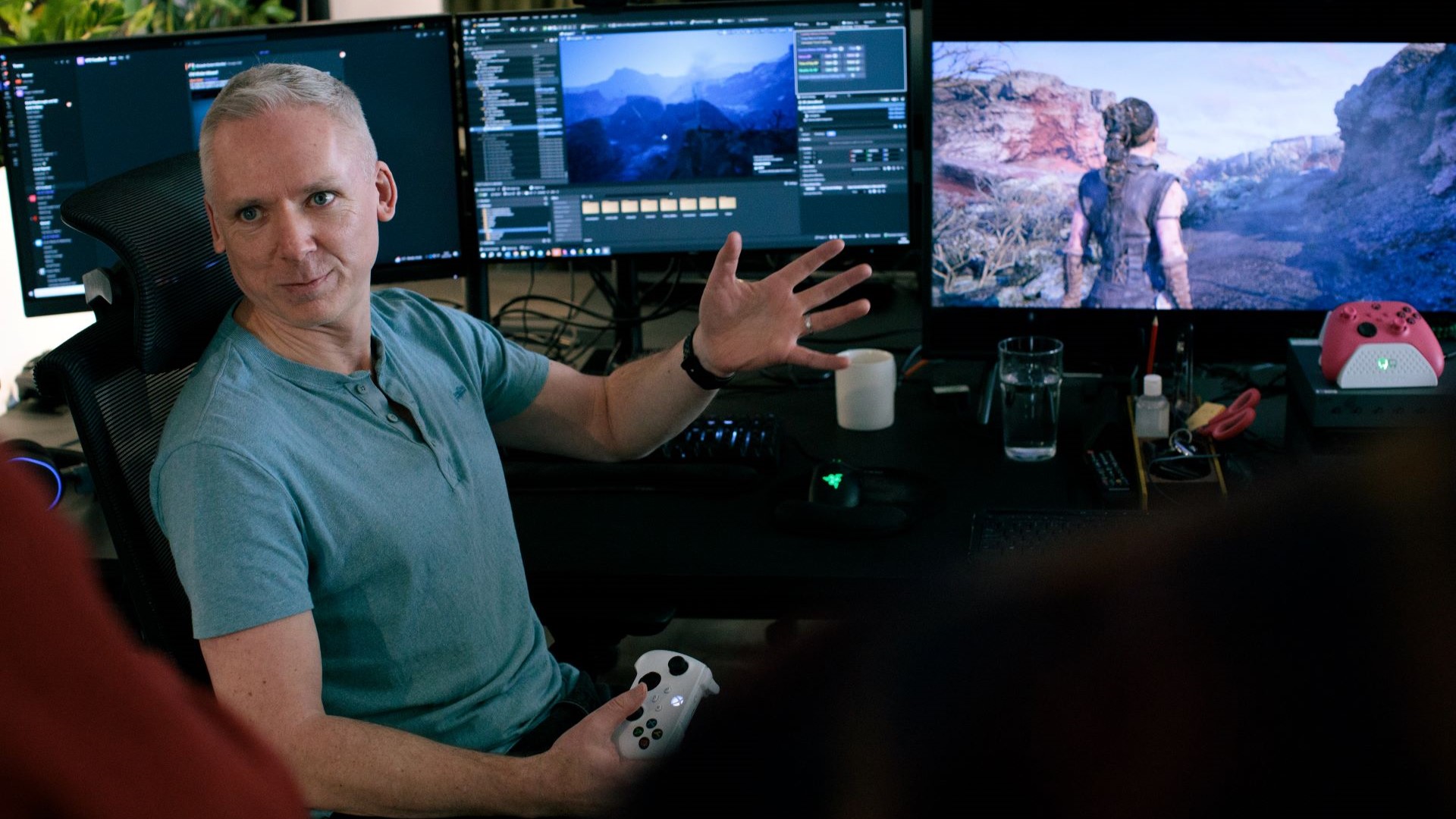
These blips in reality are of course, a way to display the world through Senua’s lens, but they’re also extremely helpful guidance from a gameplay perspective. In Hellblade II, there’s no map or interface guiding the way, and Attwell chuckles as he adds that they’ve made life quite hard for themselves by not having an in-game HUD.
It means all of the clues on how to proceed have to be shown with audio or visual cues, and this is done so incredibly intuitively; it’s rarely unclear where you need to go, and the narrative paths through these landscapes are crafted so well that it’s impossible to predict what you’re coming up against. There’s no walking into a big clearing that indicates you’re about to get into a brawl loading screen transitions – this is one smooth, seamless adventure where transitions between locations, be it the grounded external world or Senua’s supernatural inner mindscapes – are entirely intentional.
Senua’s Saga: Hellblade II is a masterclass in environmental design; it’s clear that the team has absorbed the very essence of the landscape its building, but cleverly infused with the perfect amount of mythological magic to make for a truly mesmerizing adventure, and a photo mode enthusiast’s dream.
If you want to dive further into the design of Hellblade II, check out our feature on the evolution of Senua’s character, as she prepares for the next step of her journey.
Senua’s Saga: Hellblade II will be released on May 21, 2024 for Xbox Series X|S, Windows PC, Steam and Cloud – and will be available with Xbox Game Pass and PC Game Pass day one.
